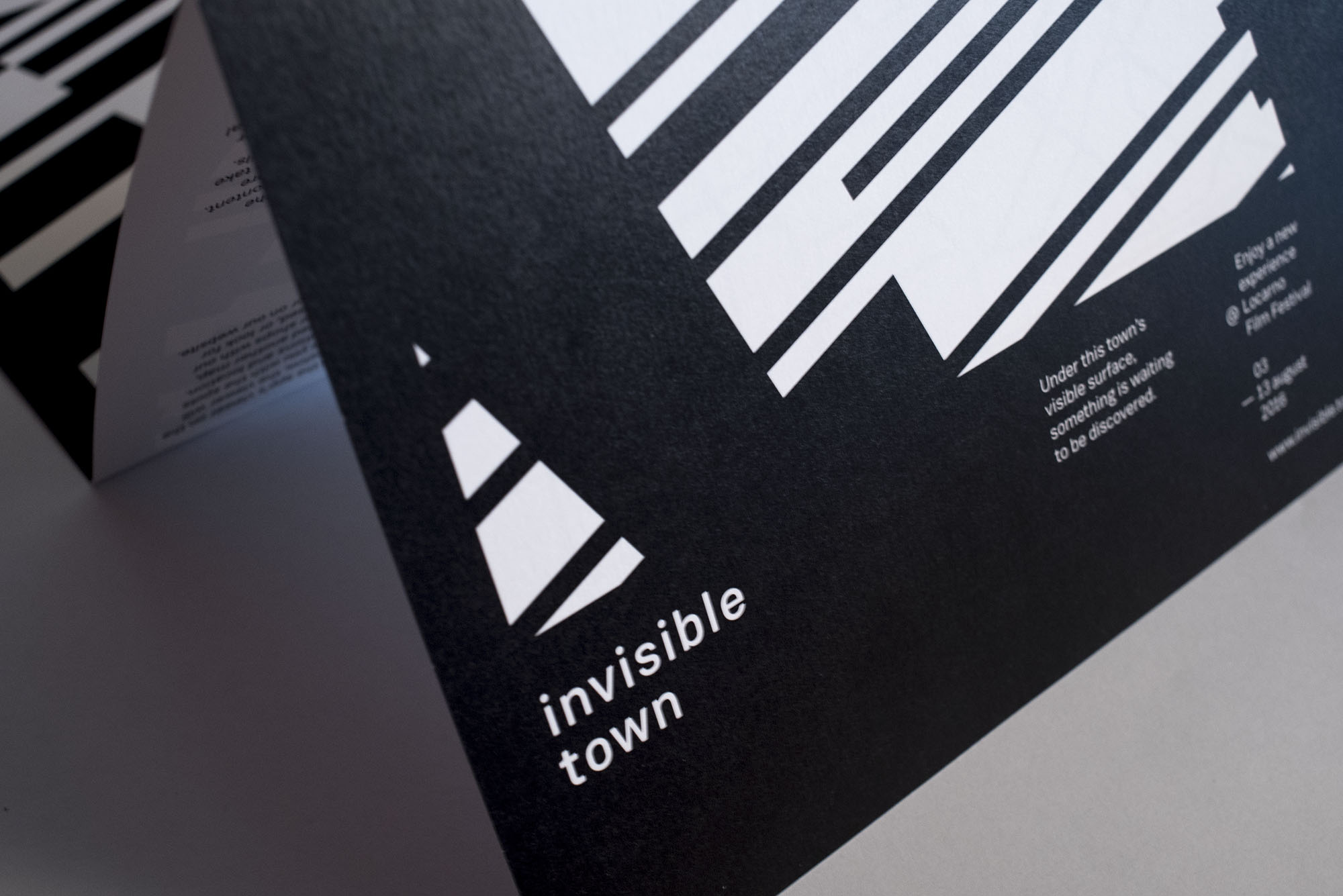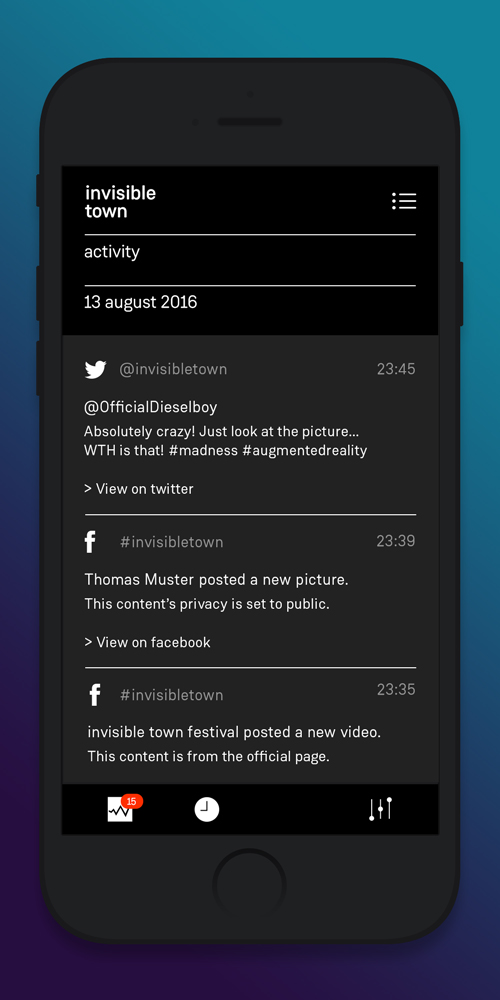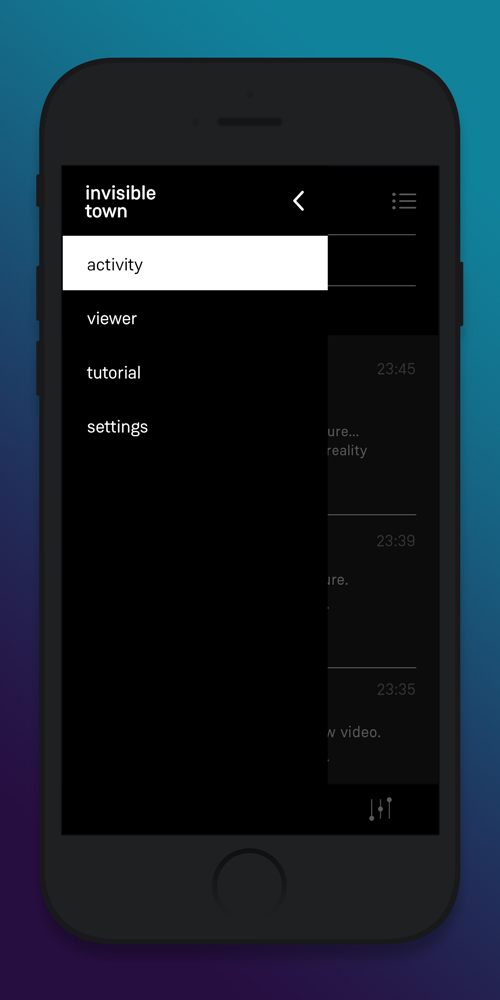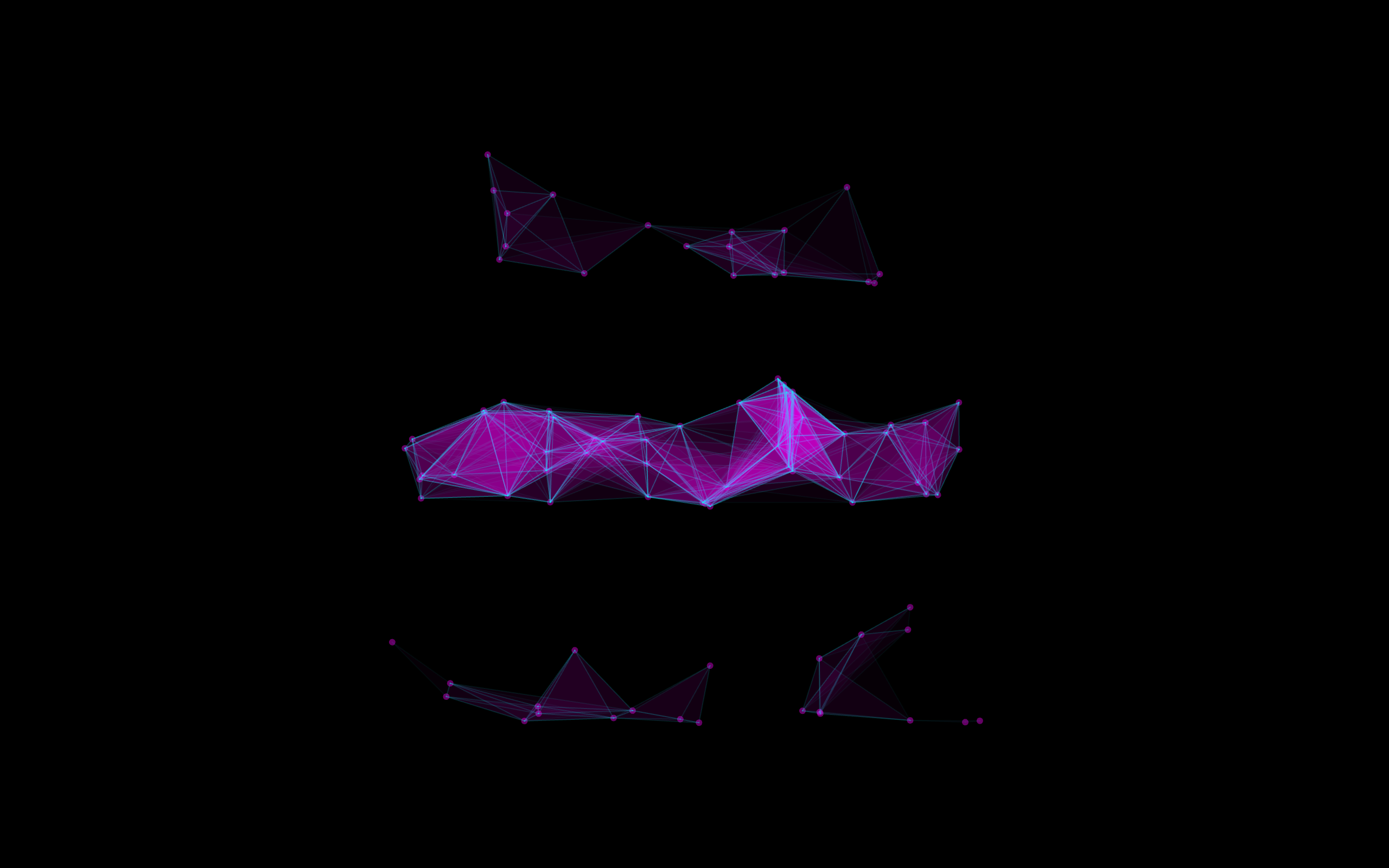Invisible town
Invisible town is an explorative experience. By using the provided application, users can move around and discover and enjoy the festival's secret content on distributed publishing spaces that appear on the map.
The content (I decided that video content suited well the fruition dynamics, but it might be music, gifs, and other medias) is generated by the contributors with some specific guidelines. As the content is applied OVER the city's existing posters and communication elements, it has to respect the provided size for each publishing space, and besides moral guidelines (the content is checked before being published), the contributors are free to enjoy their creative sides.
Users can then rate their favourite content (based on their taste, on the subject's relation with the surrounding space, on the "wow effect" just to name a few), and the highly rated ones win a final prize. The winners will be getting their prize during the official-but-secret closing party, where all users are invited.
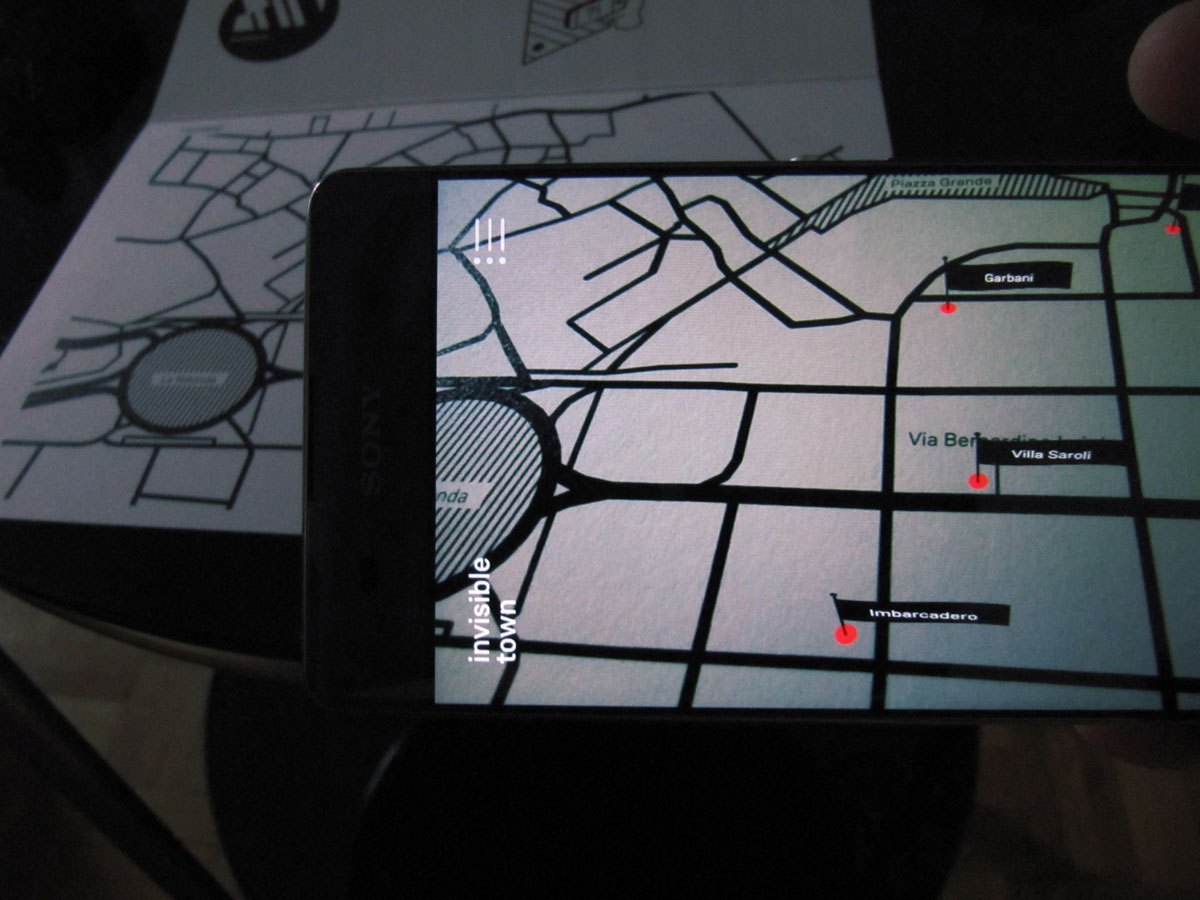
Communication elements
The festival's interaction and communication elements are
- the AR application, which allows the users to enjoy and rate the content, to share it, and to "decode" the AR map
- the poster is the main touchpoint, and provides the users with the link to download the application, and contains the festival's map
- the web-platform, which allows the contributors to send their content and acts as a social networks feed for the users
- the markers, which indicate in a simple and effective way where exactly is the publishing space once the user reaches the area
In order to keep the explorative aspects simple and funny (K.I.S.S.), and to keep the experience "secret", the publishing spaces are only indicated in the AR based map, which becomes the key to enjoy the contents.
Posters are also provided to local businesses like pubs and kiosks, so the user can always find another one.
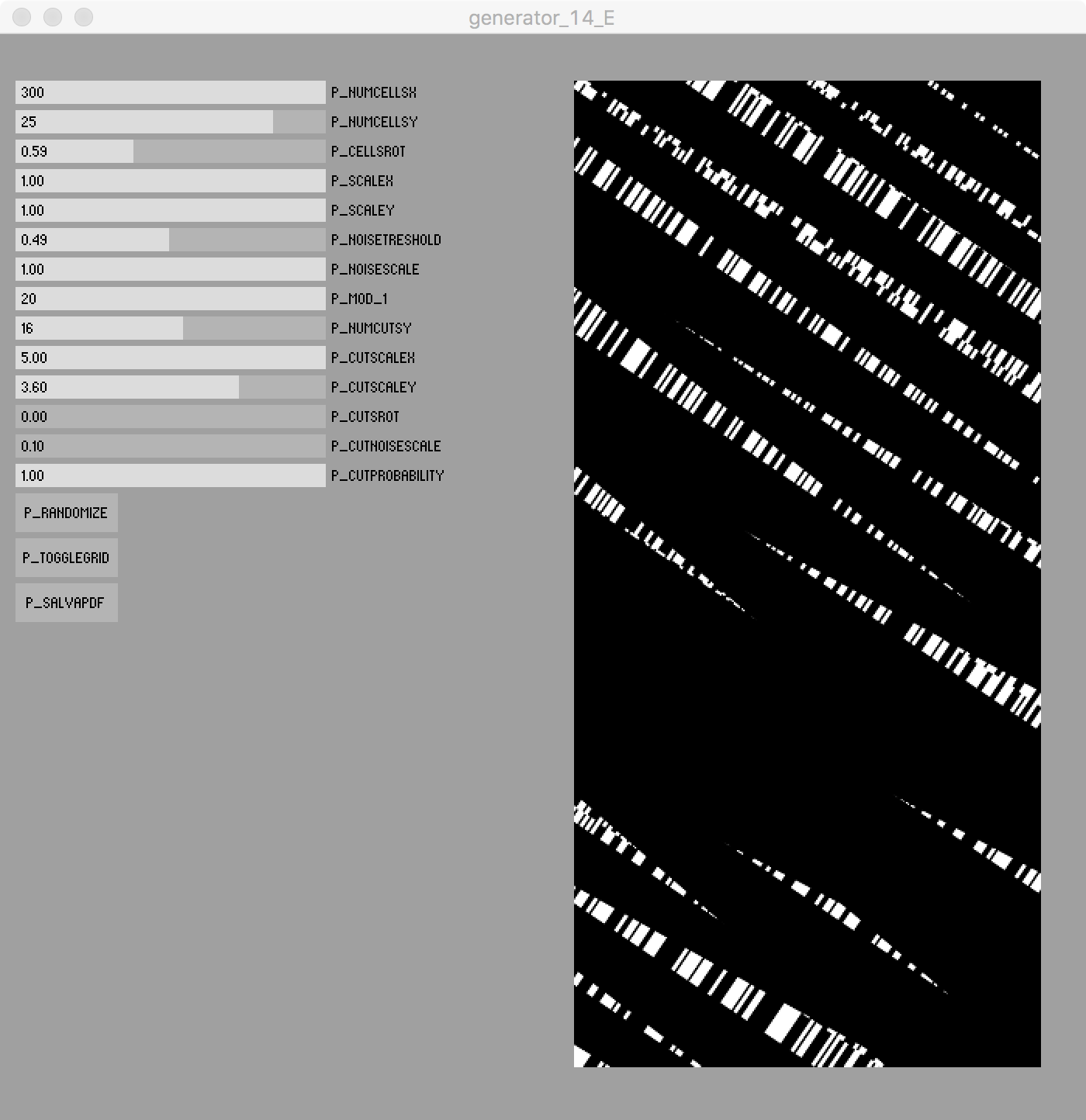
In order to represent the "hidden layer" concept, I created a parametric pattern generator using Processing, with the ability to export the result in vector format for quick printables embedding.
Research
I've been always amazed by the incredible energy you feel when sharing a secret with someone. The physical tension shared by two people who flirt when being with other people. The sense of power of being the only one in your group who knows where the super-secret-underground party is.
These secrets make you feel "special", intimate with someone, part of a selected people's group, and many times these secrets are visible but not "decodable" by others.
With the desire to discover how these emotional dynamics can be used in a communication project, I started my research by analysing the most common and uncommon "hidden communication" techniques. Besides searching for many real world examples, I've been also looking in one of the biggest sources for inspiration and utopies/ distopy since the end of the ninetieth century: science fiction.
Among them I found some traditional and oldschool ways to hide message and content (like lemon juice on paper and colored filter masking) that are mostly destructive, and more technological ones (like AR) that are mostly non-destructive.
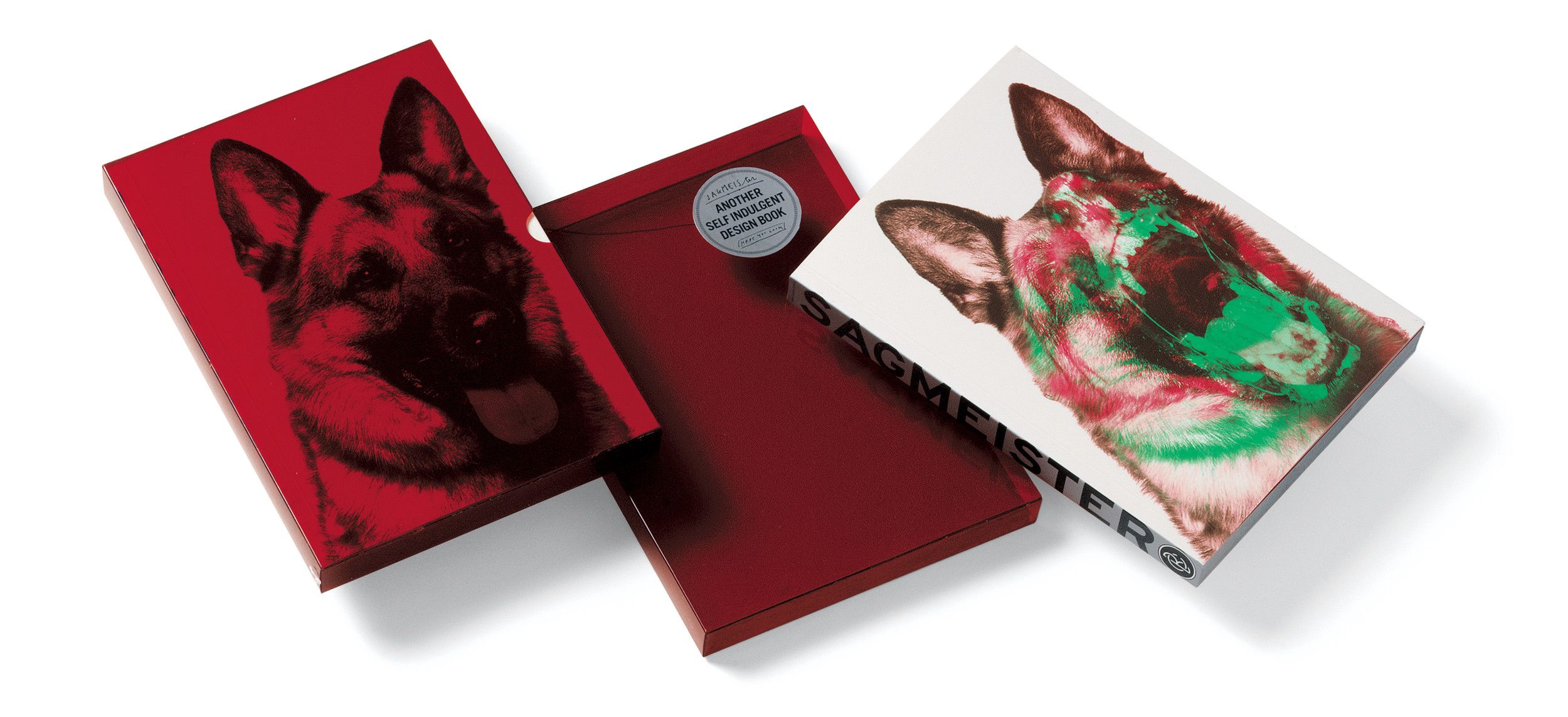
Stefan Sagmeister used an anaglyph masking trick on his "Made me look" book's cover. The transparent red cover, hides the dog's bad attitude.
Conclusions
This was my first contact with Unity3D and mobile applications, and it was really fun! The ability to build a proof of concept in such easy way was really motivating, and I got a "fully working" application without problems. My desire to plan and define a full scale experience, made me face a lot of further considerations, and it has been a very interesting opportunity to experiment within a research and hands-on project.
Also, talking about the research, most of the analysed cases were involving "magic invisible technology" (like AR lenses, surgical implants) and the recurring use scenario (or just some hypothetic ones) of these technologies, allowed for freedom of movement, and surrounding space exploration. This mainly gave me the inspiration for an explorative experience.
Nowadays virtual and augmented reality are everywhere, even in mobile phones' default applications, but back in 2016 the first world "AR revolution" started: Nintendo dropped out Pokemon GO© (a month after I started my thesis project)!

